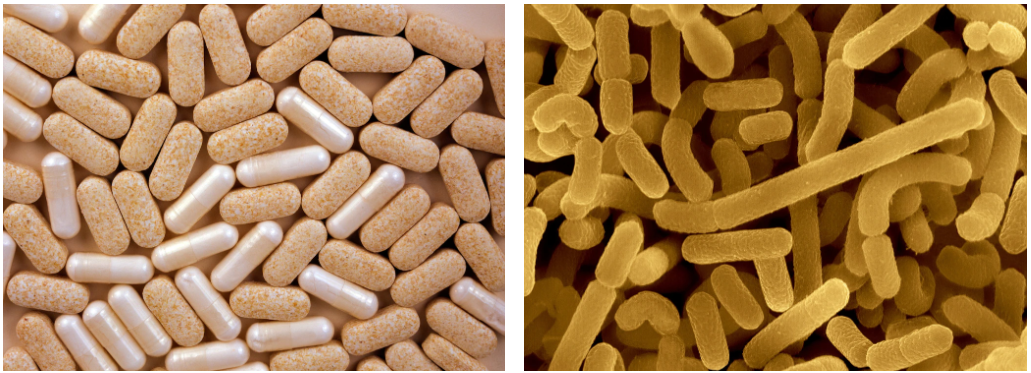Probiotics, prebiotics and postbiotics are all important but best consumed in a healthy diet
By Stacy Colino
The words probiotics, prebiotics, and postbiotics may sound like variations of the same thing, but what a difference a prefix makes. The first is a category of health-promoting microbes. The latter two groups are types of beneficial molecules. But all three biotics are critical for supporting the community of microscopic organisms that live in the gastrointestinal tract, known as the gut microbiome. With both beneficial and harmful bacteria living in the human body, these diet-related factors — the biotics — help tip the balance in the positive direction. It’s important to understand their differences, as you’ll see, because each of these factors serves a distinct purpose, even as they work together.
as the gut microbiome. With both beneficial and harmful bacteria living in the human body, these diet-related factors — the biotics — help tip the balance in the positive direction. It’s important to understand their differences, as you’ll see, because each of these factors serves a distinct purpose, even as they work together.
Despite their importance for the gut microbiome, the health benefits of these biotics, which are present in certain foods or result from their metabolism, extend beyond the digestive tract. A growing body of scientific evidence has linked prebiotics, probiotics, and postbiotics, with improvements in metabolic diseases — including obesity and cholesterol abnormalities — depressive symptoms and poor sleep quality, among many other conditions. “We’re still really early in this research,” says Anna Rosales, a registered dietitian and senior director of government affairs and nutrition at the Institute of Food Technologists, a global nonprofit association based in Chicago. “There’s a lot more for us to learn.”

Tablets containing a probiotic can deliver essential nutrients, and improve the function of the gut and immune system.
“Probiotics, prebiotics, and postbiotics are so critical to our gut health, and so much of our immune [function] and overall health is tied to our gut microbiome,” Rosales says. “I don’t think many people realize that, or how they can modify their microbiome.”
There’s also a lot for consumers to learn, experts say, because there’s widespread confusion about these biotics — including what they are, where to find them, and what they can or can’t do.
What’s in a name: probiotics
Probiotics, probably the best-known of the three players, are defined by the International Scientific Association for Probiotics and Prebiotics (ISAPP), as “live microorganisms that, when administered in adequate amounts, confer a health benefit on the host.” In this case, you are the host, the person who consumes them. And the “live microorganisms” are usually bacteria that have a health-promoting effect. Given that there are good bacteria and bad bacteria in the human body, the goal is to ingest probiotics that keep the bad ones in check.
Besides promoting general gut health, consuming food rich in probiotics can improve irritable bowel syndrome and antibiotic-related diarrhea, prevent traveler’s diarrhea, produce vitamins and increase nutrient absorption, and decrease the risk of common infections. In fact, when consumed regularly, probiotics have been found to reduce the occurrence of upper respiratory tract infections (like the common cold), according to research in a 2022 issue of The Cochrane Database of Systematic Reviews.

Left: These are tablets containing probiotic bacteria. The grainy ones contain Lactobacillus acidophilus bacteria and the plain ones, Lactobacillus salivarius. Probiotics are supposed to colonize the gastrointestinal tract and help digest food, produce essential vitamins, maintain normal bowel functions, and counter pathogenic bacteria. They may even improve the recovery of intestinal disorders and stimulate the immune system. Right: A colored scanning electron micrograph of Lactobacillus acidophilus. This bacterium occurs naturally in the human intestine, mouth, and vagina. The acidic environment it lives in inhibits the growth of many other bacteria and protects the vagina from pathogenic infection. L. acidophilus also produces lactase, the enzyme that breaks down the milk sugar (lactose) into simple sugars.
Many different types of beneficial bacteria are considered probiotics. The most common ones include Lactobacillus and Bifidobacterium, of which there are dozens of strains. “You have to match what it is you’re concerned about with the probiotic you should use,” says Gregor Reid, a microbiologist and distinguished professor emeritus at Western University in London, Ontario. In other words, if you consume a strain shown to improve constipation and you’re taking it in the hope that it will reduce your blood sugar, you’re likely to be disappointed, Reid says. (A knowledgeable health-care professional can make specific recommendations about which strains to consume.)
Some foods, such as yogurt, kefir, kimchee, and fermented soybeans and kombucha naturally contain probiotics, Rosales says. But here’s where things get complicated: Not all fermented foods or yogurts contain probiotics, Reid says. As a consumer, a good starting point is to look for the phrase “contains live and active cultures” on the label; it’s even better if specific strains of bacteria are listed, because then you’ll know you’re getting the right stuff.
In other instances, specific strains of probiotics are added to various “functional foods” — which are defined as having benefits, beyond simply providing nutrients, thanks to the addition of other ingredients. Such foods include beverages, yogurts, and cereals; probiotics are also available as supplements.
“The challenge with probiotics is they have to arrive live and well in your gut to have a health benefit,” Rosales explains. “That’s why we’re seeing them in supplements.”
When choosing functional foods or supplements that contain probiotics, Reid recommends consulting the website USProbioticGuide.com, which is designed to help health-care professionals make decisions about probiotic therapy for patients; there, you’ll find information about specific food products and supplements, the probiotic strains they contain, the health conditions they target, and how to use them.
What’s in a name: prebiotics
Simply put, prebiotics are sources of food for those beneficial microbes — the probiotics — explains Gail Cresci, a nutritionist and gut microbiome researcher in the department of pediatric gastroenterology, hepatology, and nutrition at the Cleveland Clinic.
“They are typically a form of carbohydrate or fiber that we don’t have the enzymes to digest,” she says. As a result, they move through the digestive tract to the intestine, where beneficial bacteria can feast on them.
Research has found that specific prebiotics can improve mineral absorption and blood sugar regulation, hasten digestion, improve immune function, and lower the risk of cardiovascular disease. In a study published in 2021 in the journal Frontiers in Immunology, researchers found that when people with mildly high cholesterol consumed 80 grams (1 cup) of oats daily for 45 days, their total cholesterol and (artery-clogging) LDL cholesterol levels decreased significantly.
The researchers noted that consumption of oats significantly increased the prevalence of bacteria that are known to improve metabolic health; another hypothesis is that the beta-glucans in oats may bind to cholesterol in the small intestine, thereby reducing its absorption.
Meanwhile, a study published in 2021 in the journal Psychopharmacology found that when healthy people consumed a 12.5 gram dietary supplement containing the fiber polydextrose daily for four weeks, their cognitive flexibility and sustained attention during various tasks improved slightly. This may be because consumption of polydextrose improved gut-to-brain communication.
Some vegetables, fruits, and grains—such as onions, garlic, bananas, chicory root, Jerusalem artichokes, asparagus, wheat, barley, oats, and beans — naturally contain prebiotics. They are added to other foods — such as yogurts, cereals, breads, and beverages — to enhance human health.
But you won’t find the word “prebiotic” listed on the label. Instead, you’ll find words such as galactooligosaccarides, fructooligosaccharies, oligofructose, beta-glucans, chicory fiber, or inulin on the ingredients list.
Although there isn’t an official recommended daily intake of probiotics or prebiotics, Reid says, “you probably need to consume five grams of prebiotics to stimulate beneficial microbes in your gut.”
Prebiotics + probiotics = postbiotics
In a nutshell, postbiotics “are metabolites of the probiotics or other microbes that you’ve ingested,” Reid says. In other words, when you consume foods that are rich in probiotics and prebiotics, the microbes in your gut consume the undigestible prebiotic fiber and produce bioactive compounds called postbiotics. (Postbiotics can also be found in some infant formulas and supplements for adults.)
“They are ultimately the endgame that we want — they affect how our gut operates and keep the good bacteria there and the bad bacteria out,” says Gina Crist, a community health specialist focused on nutrition at the University of Delaware.
Postbiotics have specific physiological benefits in their own right, including anti-inflammatory, antioxidant, and anticarcinogenic properties, Rosales says. “They protect the gut barrier, preventing leaky gut. They help with water and electrolyte absorption in the gut, and they have beneficial effects on immune function.” These are just some of the known effects; more are emerging on a regular basis.
Keep in mind: As is the case with other dietary supplements, probiotic, prebiotic, and postbiotic supplements aren’t regulated by the Food and Drug Administration. Manufacturers “don’t have to prove efficacy or safety,” Cresci notes, which is one reason she and other experts don’t recommend taking these supplements unless it’s under a doctor’s direction.
“In the last 10 years, we’ve realized how important the gut microbiome is to us, the host,” Cresci says. “We feed these microbes every day with what we eat.” The best way to take care of the microbiome and your overall health, she says, is by consuming a healthy diet that’s rich in fruits, vegetables, and fiber and low in fat, sugar, and processed foods. “Taking a probiotic or a probiotic supplement isn’t going to fix a bad diet.”
___________________
Credit: National Geographic





















